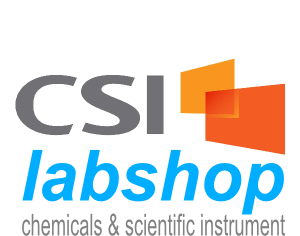FOODLAB
Innovative test method, safeguarding user’s health. Low toxicity reagents haven an easy waste disposal and permit to use the system along the production line.
Waste minimization and easy test methods thanks to pre-filled single use cuvettes (vol. 1ml).
Only micro quantities of sample (5-100 µl), used without any preparation required (or with a minimum treatment). This makes testing any kind of food fast and easy.
FoodLab is supplied already calibrated. Auto check and calibration of the reading cells as intrument is turned on. Calibration curves pre-set. A new calibration can be easily done using three or more standard or known value samples to align it to the FIL-IDF international methods.
Easy test execution even by untrained users. This allows to place the analytic system near the production line to carry out a real time quality control.
Maintenance free thanks to the spectrophotometric technology with LED emitters that excludes the contact between the instrument and the sample.
In compliance with the analytical standards as per regulation ECC 1989/2003 and subsequent modifications.
Data transmission to a host computer through RS232 serial line (XML protocol). Compliant to company LIMS systems.
FOODLAB SYSTEM now carries out chemical analysis to determine:
- L-lactic Acid in milk, cheese, cream, egge and vegetable puree
- Alkaline Phosphatase in milk
- Urea in milk
- Peroxidase in milk
- Chloride in milk, cheese, aqueous solution and vegetable puree
- Ammonia in milk, cream and cheese
- Hydrogen Peroxide in milk
- Glucose, Fructose, Reductive Sugars in tomato
- Acidity in edible fats and oils, butter, margarine cream, semi-finished product
- Acidity and Peroxides in dry fruit and olives. The test is done in an oil sample extracted using CDR sovvent free system
- Peroxides in edible fats and oils
- Soaps in edible fats and oils
- p-Anisidine in edible fats and oils(only with FoodLab Fat*)
- Iodine value in palm oil
- Polyphenols/antioxidative activity in olive oil
- L-lactic Acid in egg
- Cholesterol in egg
- D-3-Hydroxybutyric acid in egg
Main Technical Characteristics
- SYSTEM photometer with 3 solid state cells and independent reading channels, temperature controlled at 37ºC.
- CONTROL UNIT Motorola technology.
- PHOT. RANGE 0.0 – 2.3Abs, (0.0 – 4.0 Abs) ampl.
- DISPLAY alphanumeric LCD display, 4 rows of 20 columns.
- PRINTER built-in thermo-printer, using standard thermo-printer paper rools (45mm diameter, 57mm width).
- LANGUAGES English, German, Frence, Spanish and Italian are already supported.
- DATA INPUT/OUTPUT R232 input (DTE) for software and configuration upgrade and RS 232 output for host-connection to a standard PC. Date are snet following the xml protoco.
- POWER SUPPLY main voltage with AC/DC external adapter to 12 V Dc. Abs 1,4 A max.
- ENVIRONMENTAL CONDITIONS OF OPERATION+15ºC to 35ºC.
- WEIGHT/DIMENSIONS: 2.5Kg/width 190mm, depth 310mm, height 165mm.
- CONFORMITIES: EN50081/1 EN 55022B EN 50082/2 ENV 50140.
